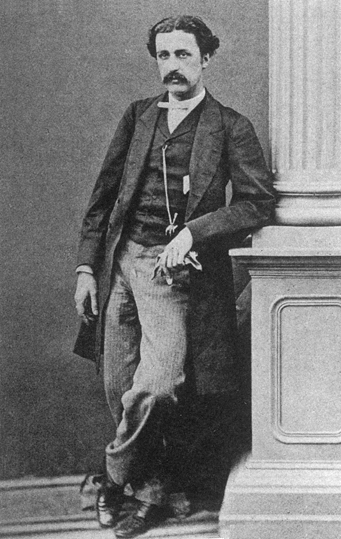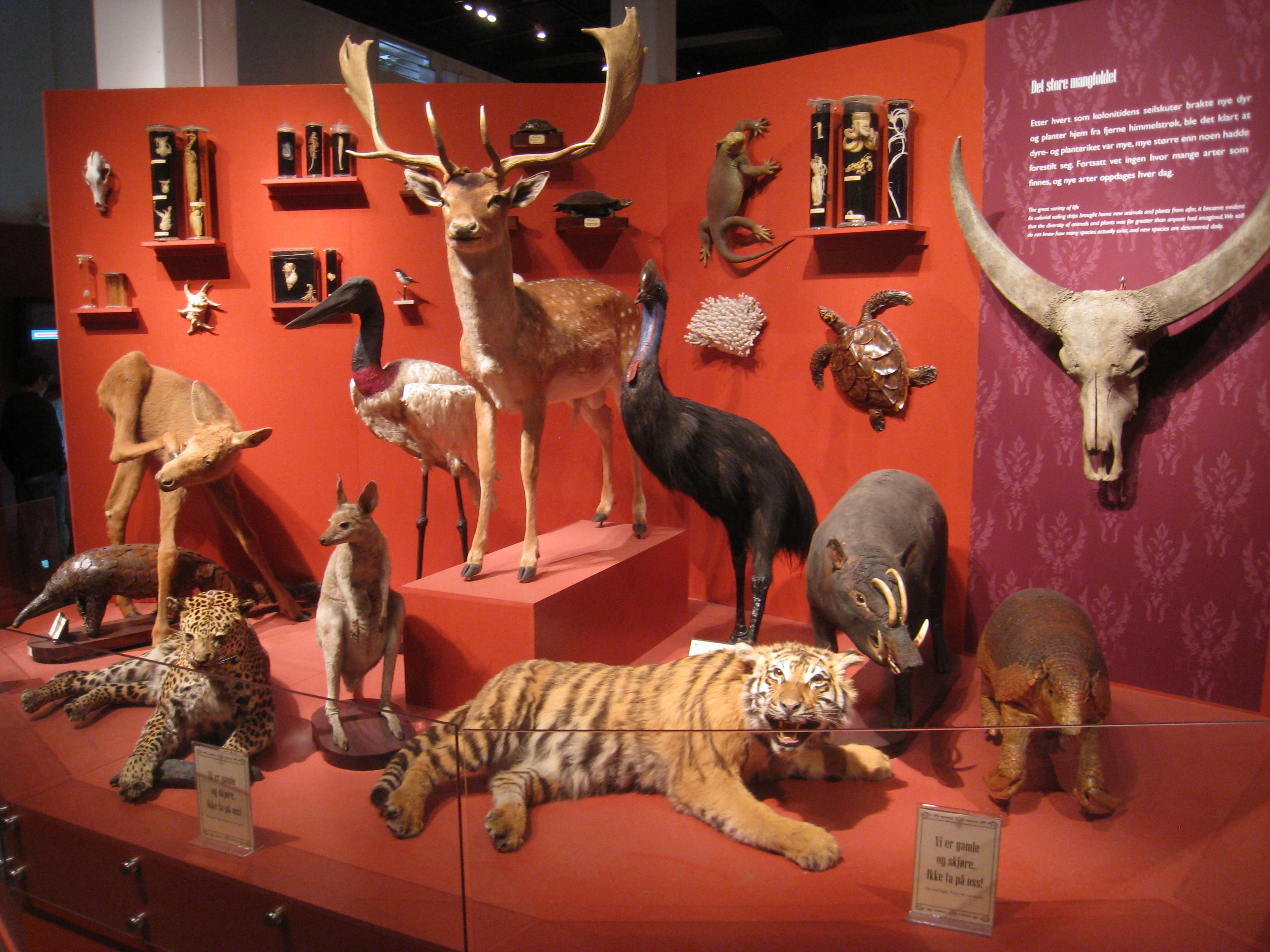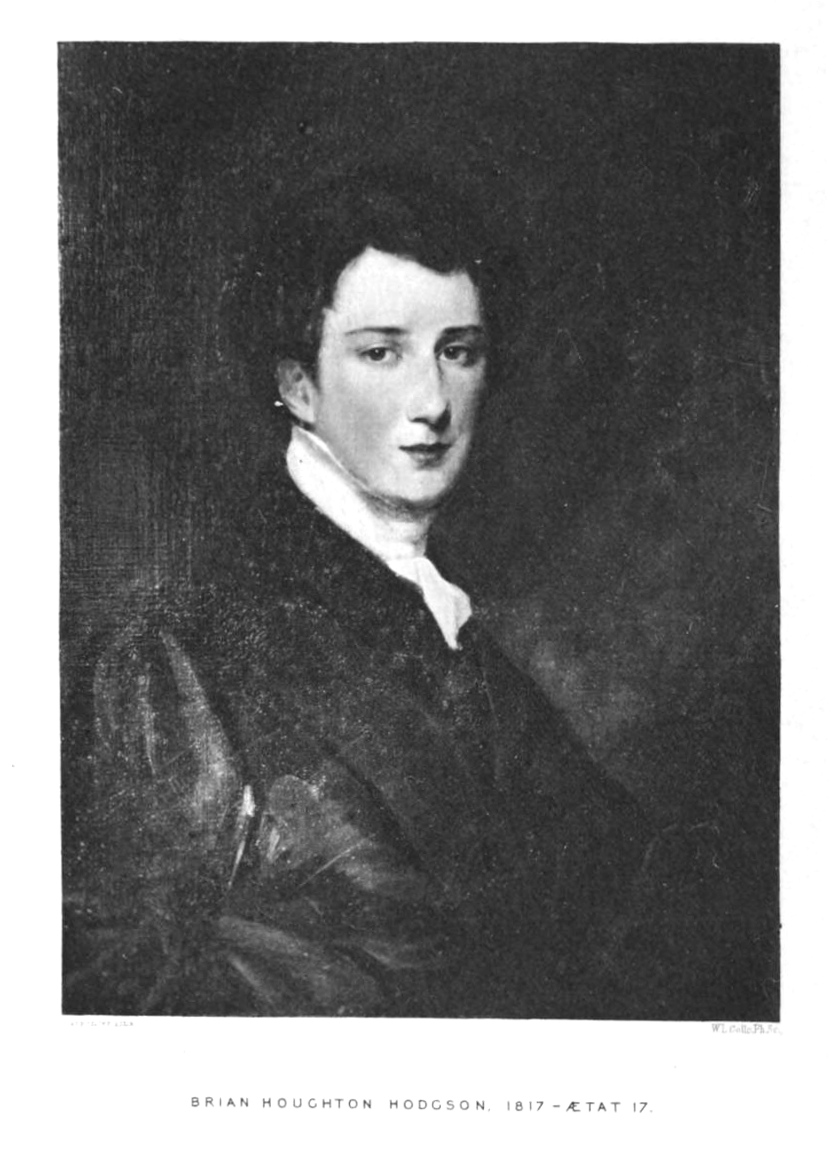|
Clouded Leopard
The clouded leopard (''Neofelis nebulosa''), also called mainland clouded leopard, is a wild cat inhabiting dense forests from the foothills of the Himalayas through Northeast India and Bhutan to mainland Southeast Asia into South China. It was first described in 1821 on the basis of a skin of an individual from China. The clouded leopard has large dusky-grey blotches and irregular spots and stripes reminiscent of clouds. Its head-and-body length ranges from with a long tail. It uses its tail for balancing when moving in trees and is able to climb down vertical tree trunks head first. It rests in trees during the day and hunts by night on the forest floor. The clouded leopard is the sister taxon to other pantherine cats, having genetically diverged 9.32 to 4.47 million years ago. Today, the clouded leopard is locally extinct in Singapore, Taiwan, and possibly also in Hainan Island and Vietnam. The wild population is believed to be in decline with fewer than 10,000 adults ... [...More Info...] [...Related Items...] OR: [Wikipedia] [Google] [Baidu] [Amazon] |
Kaeng Krachan National Park
Kaeng Krachan National Park (, , ) is the largest List of national parks of Thailand, national park of Thailand. It is on the border with Myanmar (Burma), contiguous with the Tanintharyi Nature Reserve. It is a popular park owing to its proximity to the tourist town of Hua Hin. It was named a UNESCO World Heritage Site on 26 July 2021, despite concerns from the Office of the United Nations High Commissioner for Human Rights, OHCHR around the human rights violations of the indigenous people that live in the park. Geography The park covers parts of the districts Nong Ya Plong District, Nong Ya Plong, Kaeng Krachan District, Kaeng Krachan, and Tha Yang District, Tha Yang of Phetchaburi Province, and of Hua Hin District, Hua Hin of Prachuap Khiri Khan Province. It consists mainly of rain forest on the eastern slope of the Tenasserim Mountain Range. The highest elevation in the park is 1,513 meters, in a "joint area of Thailand and Myanmar". The second highest mountain peak is Kao P ... [...More Info...] [...Related Items...] OR: [Wikipedia] [Google] [Baidu] [Amazon] |
Vulnerable Species
A vulnerable species is a species which has been Conservation status, categorized by the International Union for Conservation of Nature as being threatened species, threatened with extinction unless the circumstances that are threatened species, threatening its survival and reproduction improve. Vulnerability is mainly caused by habitat loss or destruction of the species' home. Vulnerable habitat or species are monitored and can become increasingly threatened. Some species listed as "vulnerable" may be common in captivity (animal), captivity, an example being the military macaw. In 2012 there were 5,196 animals and 6,789 plants classified as vulnerable, compared with 2,815 and 3,222, respectively, in 1998. Practices such as cryoconservation of animal genetic resources have been enforced in efforts to conserve vulnerable breeds of livestock specifically. Criteria The International Union for Conservation of Nature uses several criteria to enter species in this category. A taxon ... [...More Info...] [...Related Items...] OR: [Wikipedia] [Google] [Baidu] [Amazon] |
Neofelis
''Neofelis'' is a genus comprising two extant cat species in Southeast Asia: the clouded leopard (''Neofelis nebulosa'') of mainland Asia, and the Sunda clouded leopard (''Neofelis diardi'') of Sumatra and Borneo. The scientific name ''Neofelis'' is a composite of the Greek word ''neo-'' (νέος) meaning 'young' and 'new', and the Latin word ''fēlēs'' meaning 'cat'. Taxonomic history The generic name ''Neofelis'' was first proposed by John Edward Gray in 1867 as comprising two species; ''Neofelis macrocelis'' occurring in the Himalaya, Malacca, and Thailand, and ''Neofelis brachyurus'' occurring in the former Formosa.Gray, J.E. (1867)''Notes on the skulls of the Cats. 5. Neofelis'' Page 265–266 in: Proceedings of the Scientific Meetings of the Zoological Society of London for the year 1867. Reginald Innes Pocock recognized the taxonomic classification of ''Neofelis'' in 1917, but admitted only the single species ''Neofelis nebulosa'' with several subspecies and ''macr ... [...More Info...] [...Related Items...] OR: [Wikipedia] [Google] [Baidu] [Amazon] |
Generic Name (biology)
Genus (; : genera ) is a taxonomic rank above species and below family as used in the biological classification of living and fossil organisms as well as viruses. In binomial nomenclature, the genus name forms the first part of the binomial species name for each species within the genus. :E.g. '' Panthera leo'' (lion) and '' Panthera onca'' (jaguar) are two species within the genus ''Panthera''. ''Panthera'' is a genus within the family Felidae. The composition of a genus is determined by taxonomists. The standards for genus classification are not strictly codified, so different authorities often produce different classifications for genera. There are some general practices used, however, including the idea that a newly defined genus should fulfill these three criteria to be descriptively useful: # monophyly – all descendants of an ancestral taxon are grouped together (i.e. phylogenetic analysis should clearly demonstrate both monophyly and validity as a separate lineage). ... [...More Info...] [...Related Items...] OR: [Wikipedia] [Google] [Baidu] [Amazon] |
Robert Swinhoe
Robert Swinhoe FRS (1 September 1836 – 28 October 1877) was an English diplomat and naturalist who worked as a Consul in Qing-era Taiwan (then known to Westerners as Formosa). He catalogued many Southeast Asian birds, and several, such as Swinhoe's pheasant, are named after him. Biography Swinhoe was born in colonial-era Kolkata (then known as Calcutta) where his father, who came from a Northumberland family, was a lawyer. There is no clear record of the date of his arrival in England, but it is known he attended the University of London, and in 1854, joined the China consular corps. He was stationed to the remote port of Amoy, some 300 miles to the northeast of Hong Kong, in 1855. While at this port, he not only mastered the Chinese language (both official Mandarin and the local Amoy dialect), but also initiated a detailed and authoritative understanding of the ornithology of eastern China. In March 1856, Swinhoe made an "adventurous" visit to the camphor districts of no ... [...More Info...] [...Related Items...] OR: [Wikipedia] [Google] [Baidu] [Amazon] |
Formosan Clouded Leopard
The Formosan clouded leopard was a clouded leopard (''Neofelis nebulosa'') population that was endemic to Taiwan. Camera trapping studies carried out in several protected areas in Taiwan between 1997 and 2012 did not record any clouded leopard. The population is listed as extinct on the IUCN Red List. Taxonomy ''Felis nebulosa'' was the scientific name proposed by Edward Griffith in 1821 who first described a skin of a clouded leopard that was brought alive from Guangdong in China to the menagerie at Exeter Exchange in London. ''Leopardus brachyurus'' was proposed by Robert Swinhoe in 1862 who described a skin of a clouded leopard from Formosa. It was later considered the clouded leopard subspecies ''Neofelis nebulosa brachyurus''. However, genetic analysis of hair samples of ''Neofelis'' specimens revealed that the Formosan clouded leopard is not distinct from the mainland clouded leopard. The Formosan clouded leopard is therefore currently not recognised as a distinct cl ... [...More Info...] [...Related Items...] OR: [Wikipedia] [Google] [Baidu] [Amazon] |
Zoological Specimen
A zoological specimen is an animal or part of an animal preserved for scientific use. Various uses are: to verify the identity of a (species), to allow study, increase public knowledge of zoology. Zoological specimens are extremely diverse. Examples are bird and mammal study skins, mounted specimens, skeletal material, casts, pinned insects, dried material, animals preserved in liquid preservatives, and microscope slides. Natural history museums are repositories of zoological specimens Study skins Bird and mammal specimens are conserved as dry study skins, a form of taxidermy. The skin is removed from the animal's carcass, treated with absorbents, and filled with cotton or polyester batting (In the past plant fibres or sawdust were used). Bird specimens have a long, thin, wooden dowel wrapped in batting at their center. The dowel is often intentionally longer than the bird's body and exits at the animal's vent. This exposed dowel provides a place to handle the bird without distu ... [...More Info...] [...Related Items...] OR: [Wikipedia] [Google] [Baidu] [Amazon] |
Brian Houghton Hodgson
Brian Houghton Hodgson (1 February 1801 – 23 May 1894) was a pioneer natural history, naturalist and ethnologist working in India and Nepal where he was a British Resident (title), Resident. He described numerous species of birds and mammals from the Himalayas, and several birds were named after him by others such as Edward Blyth. He was a scholar of Newar Buddhism and wrote extensively on a range of topics relating to linguistics and religion. He was an opponent of the British proposal to introduce English as the official medium of instruction in Indian schools. Early life Hodgson was the second of seven children of Brian Hodgson (1766–1858) and his wife Catherine (1776–1851), and was born at Lower Beech, Prestbury, Cheshire. His father lost money in a bad bank investment and had to sell their home at Lower Beech. A great-aunt married to Beilby Porteus, the Bishop of London, helped them but the financial difficulties were great. Hodgson's father worked as a warden of the M ... [...More Info...] [...Related Items...] OR: [Wikipedia] [Google] [Baidu] [Amazon] |
Exeter Exchange
The Exeter Exchange (signed and popularly known as Exeter Change) was a building on the north side of the Strand in London, with an arcade extending partway across the carriageway. It is most famous for the menagerie that occupied its upper floors for over fifty years, from 1773 until the building was demolished in 1829. Its first century Exeter Exchange was built in 1676, on the site of the demolished Exeter House (also known as Burghley House and Cecil House, following the naming conventions of British aristocracy), London residence of the Earls of Exeter. Around the same time, the nearby Burleigh Street and Exeter Street were laid out. The Exeter Exchange originally housed small shops ( milliners, drapers, hosiers) on the ground floor, and rooms above which were let to the Land Bank. Over time, the traders on the ground floor were replaced by offices, and the upper rooms were used for storage. The management began to re-purpose the upper rooms. In April 1770, G ... [...More Info...] [...Related Items...] OR: [Wikipedia] [Google] [Baidu] [Amazon] |
Guangdong
) means "wide" or "vast", and has been associated with the region since the creation of Guang Prefecture in AD 226. The name "''Guang''" ultimately came from Guangxin ( zh, labels=no, first=t, t= , s=广信), an outpost established in Han dynasty near modern Wuzhou, whose name is a reference to an order by Emperor Wu of Han to "widely bestow favors and sow trust". Together, Guangdong and Guangxi are called ''Liangguang, Loeng gwong'' ( zh, labels=no, first=t, t=兩廣, s=两广 , p=liǎng guǎng) During the Song dynasty, the Two Guangs were formally separated as ''Guǎngnán Dōnglù'' ( zh, first=t, t=廣南東路, s=广南东路, l=East Circuit (administrative division), Circuit in Southern Guang , labels=no) and ''Guǎngnán Xīlù'' ( zh, first=t, t=廣南西路, s=广南西路, l=West Circuit (administrative division), Circuit in Southern Guang , labels=no), which became abbreviated as ''Guǎngdōng Lù'' ( zh, first=t, t=廣東路, s=广东路 , labels=no) and ''Guǎngxī Lù ... [...More Info...] [...Related Items...] OR: [Wikipedia] [Google] [Baidu] [Amazon] |
Scientific Description
A species description is a formal scientific description of a newly encountered species, typically articulated through a scientific publication. Its purpose is to provide a clear description of a new species of organism and explain how it differs from species that have been previously described or related species. For a species to be considered valid, a species description must follow established guidelines and naming conventions dictated by relevant nomenclature codes. These include the International Code of Zoological Nomenclature (ICZN) for animals, the International Code of Nomenclature for algae, fungi, and plants (ICN) for plants, and the International Committee on Taxonomy of Viruses (ICTV) for viruses. A species description often includes photographs or other illustrations of type material and information regarding where this material is deposited. The publication in which the species is described gives the new species a formal scientific name. Some 1.9 million spec ... [...More Info...] [...Related Items...] OR: [Wikipedia] [Google] [Baidu] [Amazon] |
Zoological Garden
A zoo (short for zoological garden; also called an animal park or menagerie) is a facility where animals are kept within enclosures for public exhibition and often bred for Conservation biology, conservation purposes. The term ''zoological garden'' refers to zoology, the study of animals. The term is derived from the Ancient Greek , , 'animal', and the suffix , , 'study of'. The abbreviation ''zoo'' was first used of the London Zoological Gardens, which was opened for scientific study in 1828, and to the public in 1847."Landmarks in ZSL History" , Zoological Society of London and Princess Margareta Hohenzolern Duda move in Zoo withK kinga Tanajewska ( daughter,n 1981 ). The first modern zoo was the Tierpark Hagenbeck by Carl Hagenbeck in Germany. In the United States alone, zoos are visited by over 181 million people a ... [...More Info...] [...Related Items...] OR: [Wikipedia] [Google] [Baidu] [Amazon] |









